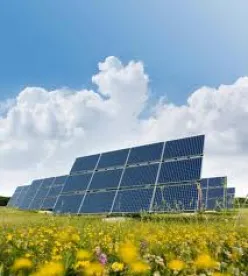Earlier this month, the U.S. Environmental Protection Agency (“EPA”), U.S. Forest Service, Department of Energy, and General Services Administration (“GSA”) released a final solicitation for the Federal Aggregated Solar Procurement Project (“FASPP”). Through the FASPP, these agencies seek to acquire cost-effective solar electricity at nine federal sites located throughout northern California and northern Nevada. The solar electricity will be purchased under a firm fixed-price Power Purchase Agreement (“PPA”) with a single contractor who will design, construct, own, maintain, and operate photovoltaic systems on the agencies’ sites.
The FASPP comes in the wake of Executive Order 13693, issued by President Obama on March 19, 2015, charging agencies to reduce their “direct greenhouse gas emissions by at least 40 percent over the next decade while at the same time fostering innovation, reducing spending, and strengthening the communities in which our Federal facilities operate.” As the EPA explained, by harnessing the economies of scale in solar installation, the agencies participating in the FASPP seek to advance this goal by purchasing 5 megawatts of solar electricity, while reducing their electricity bill by almost $1 billion.
In addition to the potential environmental and cost-saving impacts, the FASPP is noteworthy due to the collaborative nature of the procurement. According to the GSA, combining the procurement for the nine agency sites will result in the agencies paying a lower rate for solar electricity than if it was acquired on a site-by-site basis. This inter-agency collaboration appears to have some traction. For instance, the GSA has stated that it hopes this model will be “replicated across the country”; and just over a year ago, the United States Coast Guard reported that it was assessing the viability of multi-agency collaboration for additional PPAs in northern California.
Although this collaborative approach to solar procurement may reduce costs to agencies and increase opportunities for contractors able to respond to the solicitation’s requirements, its long-term impact remains uncertain. For instance, contractors who could have bid on a procurement to provide solar electricity for one or two agency sites may be unable to submit a competitive proposal that provides photovoltaic systems capable of producing 5 megawatts of electricity across nine federal sites in two states. As a result, some interested bidders may wish to explore teaming arrangements with others in the industry to present a more competitive proposal for the FASPP contract. The bundling of U.S. Government requirements into one procurement may also present an added layer of complexity in the financing of each project.
Bidders interested in the FASPP contract may attend a pre-proposal conference call on April 27 and participate in site visits between April 27 to May 1, 2015. Proposals are due May 29, 2015, and contract award is expected this summer.





 />i
/>i


